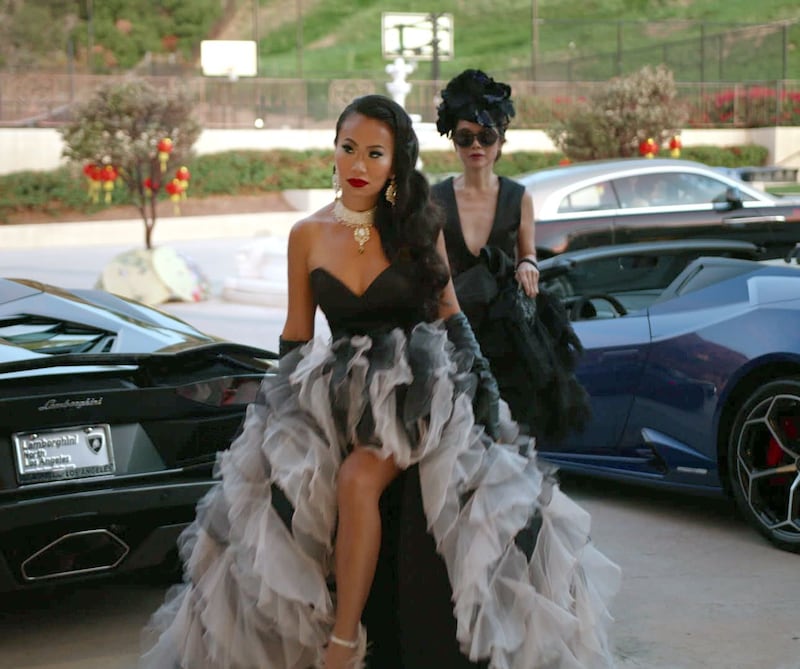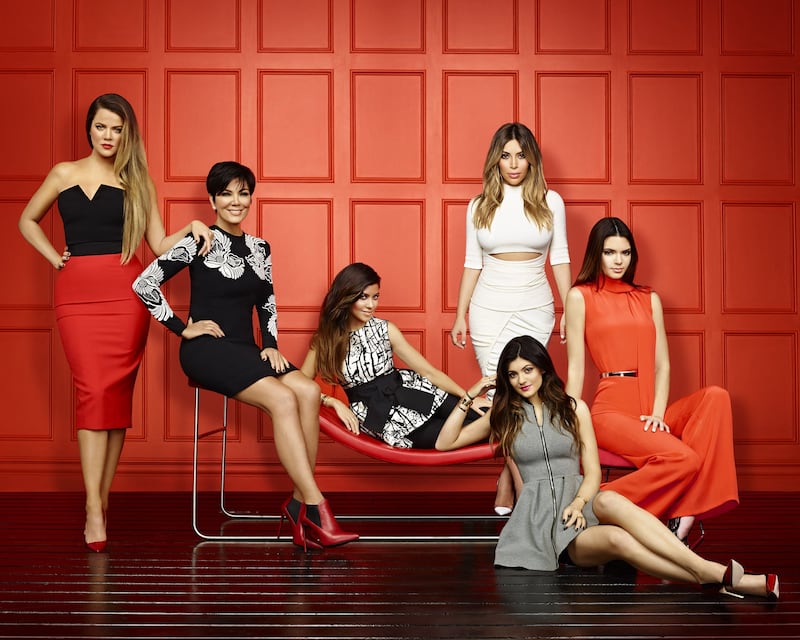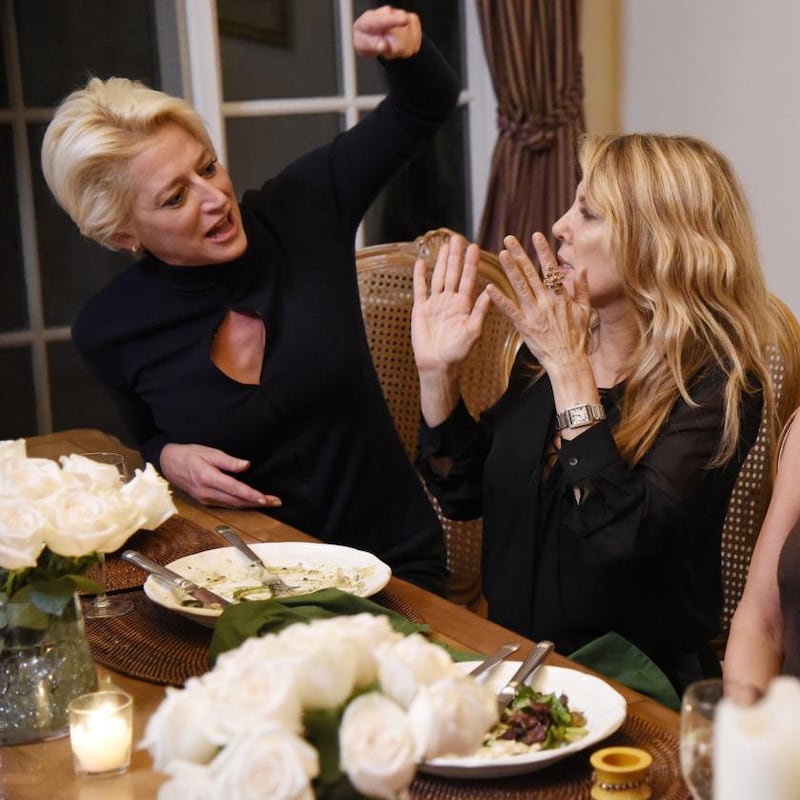In the first episode of the reality-TV show Bling Empire, an heiress named Anna Shay commits to an excursion so globe-straddlingly audacious it would make Greta Thunberg weep. Shay, who lives in Los Angeles, asks a friend and her objectively awful boyfriend to go to her favourite restaurant with her – in Paris. They charter a private plane, eat their dinner and head back to California the next day. It sets the scene for a series that luxuriates in the lives of the super-rich, and the candour, conflict and rule-breaking that such an existence affords.
Bling Empire, which follows the fortunes of a wealthy pocket of LA’s east and southeast Asian-American community, is not an outlier; in the past few years networks have commissioned a host of similar shows, capitalising on the popularity of series such as the Real Housewives franchise and the enduring appeal of the soon-to-end Keeping Up with the Kardashians. (Bling Empire is produced by Jeff Jenkins Productions, the company led by a Keeping Up with the Kardashians executive producer.)
We can't call up Jeff Bezos to tell him that the growth of his wealth during a pandemic disgusts us. But we can jeer at those who have chosen to flaunt their money on our TV
On this side of the Atlantic, the new (and 21st) season of Made in Chelsea – which is known for its own late-notice getaways to New York and Argentina – is set in the somewhat less glamorous climes of the English Cotswolds, because of Covid regulations, but is still bejewelled with wealth: the cast isolate in a grand house and guzzle champagne while adorned in mink coats.
Traditionally, we think of reality TV as portraying ordinary people in extraordinary circumstances – think Orwellian contests such as Big Brother. Shows like the Up series, which began in 1964, mapped the chequered lives of everyday participants from youth to adulthood, while in the 2010s Benefits Street and Skint tapped into our complicated curiosity about poverty and government welfare.

Recently, however, working-class stories on reality television have fallen out of favour. Matt Nicholls, agent to the Made in Chelsea cast members Olivia Bentley and Mark-Francis Vandelli, thinks that shows such as Benefits Street became so popular that commissioning producers started pushing for more extreme, desperate conditions "until there was nowhere left to go".
Viewers began to question the ethics of treating low-income “reality stars” like zoo animals to be poked, prodded and guffawed at. Known as “poverty porn”, this type of TV was a concept discouraged by global aid workers for its perpetuation of misrepresentative stereotypes of working-class people.
These shows still exist but are less extreme: take the savvy working-class people on Channel 5's Bargain Brits on Benefits or the benevolent nurses on Channel 4's long-running show One Born Every Minute. But since these tempered versions of reality TV don't satiate our need for extreme, they have left a space for more shows about the wealthy. "Punching up rather than down is perhaps less problematic," says Dr Ruth Deller, a lecturer at Sheffield Hallam University and the author of Reality Television: The TV Phenomenon That Changed the World, "especially if [the rich] are in on the joke."

The unstoppable rise of wealth TV can be traced back to the success of the US teen drama The OC. The fictional portrayal of the life of wealthy teens and their parents in the exclusive communities of a southern Californian town proved to be so popular that reality-TV commissioners wanted a piece of the proverbial pie.
In 2004, MTV launched the first rich reality-TV show in Laguna Beach: The Real Orange County, which lasted two years and spawned a successful spin-off, The Hills. But the true game-changer came in the form of The Real Housewives of Orange County, which began airing on the reality-TV network Bravo in 2006. Showing the lives of rich white women in the OC, the franchise grew nine spin-off shows in the United States alone, including Atlanta and New York, and many more globally. Over 15 years, Bravo has managed to diversify its cast, and capture a varied audience, from gay fans attracted to the camp fabulousness of the lives on show to bored housewives themselves.

In the past year, Netflix has attempted to challenge Bravo's power with its own line of shows, including Bling Empire and the 2019 hit Selling Sunset, about a team of high-end west coast real-estate agents. The result is a cycle of ultra-rich one-upmanship. "Producers are thinking, How can we make a show 'even glossier' and more aspirational?" Nicholls says. For more than a decade, fans have become used to Housewives spending five figures on shopping sprees, but on Bling Empire "we meet a woman whose father is an arms dealer", says Ben Mandelker, cohost of the reality-breakdown podcast Watch What Crappens, "and a person who owns the stores that these Housewives do their spending sprees in".
For all the gaudy opulence on show, there has been an unlikely positive gained from this trend for wealth TV, in the burgeoning diversity seen on screen. Audiences in the US “are no longer predominantly white, and viewers want to relate to the stories they are watching”, says Jeff Jenkins, the executive producer of Bling Empire. “It seems arrogant to think, in 2021, that people just want to consume stories about white folk.”

Bravo has been very strong in this regard, airing shows such as Shahs of Sunset and Family Karma, which feature predominantly Muslim and Jewish Persian Americans and Indian American cast members respectively. The success, meanwhile, of the network's black reality series, such as The Real Housewives of Atlanta and Potomac, has dispelled the tired notion that minority shows don't capture large audiences.
In the past year, Netflix has successfully emulated this trend with shows such as Fabulous Lives of Bollywood Wives, Indian Matchmaking and, of course, Bling Empire. These shows serve as a departure from reality TV’s past portrayals of minorities, on American reality shows such as Cops and The First 48, which encouraged the stereotype that black people are prone to crime and deceit. Still, modern reality shows aren’t entirely perfect when it comes to race. Their often heavily stereotyped portrayals of minorities – be it overbearing Indian parents or uberwealthy southeast Asians – serve as a reminder that representation in itself isn’t always enough in telling the reality of people’s lives.

It is no coincidence that rich reality TV is enjoying a boom just as the world faces the upheaval caused by Covid, offering as it does schadenfreude and escapism. We can't call up Jeff Bezos to tell him that the growth of his wealth during a pandemic disgusts us. But we can jeer at those who have chosen to flaunt their money on our TV. It would be wrong to assume that the lives of the very rich are entirely easy, says Jenkins. "For most of us it's perhaps secretly satisfying to learn that the wealthy also have lots of problems – and sometimes their problems are even worse than our own."
Wealthy people aren’t going anywhere. So why not bask in their lives, from a safe distance? (A very safe distance, in the case of Bling Empire’s Anna – who in one scene knocks down the wall of her walk-in closet with a sledgehammer while wearing a ballgown.) Considering they control the world we live in, perhaps it’s a good idea we keep an eye on them. – Guardian











